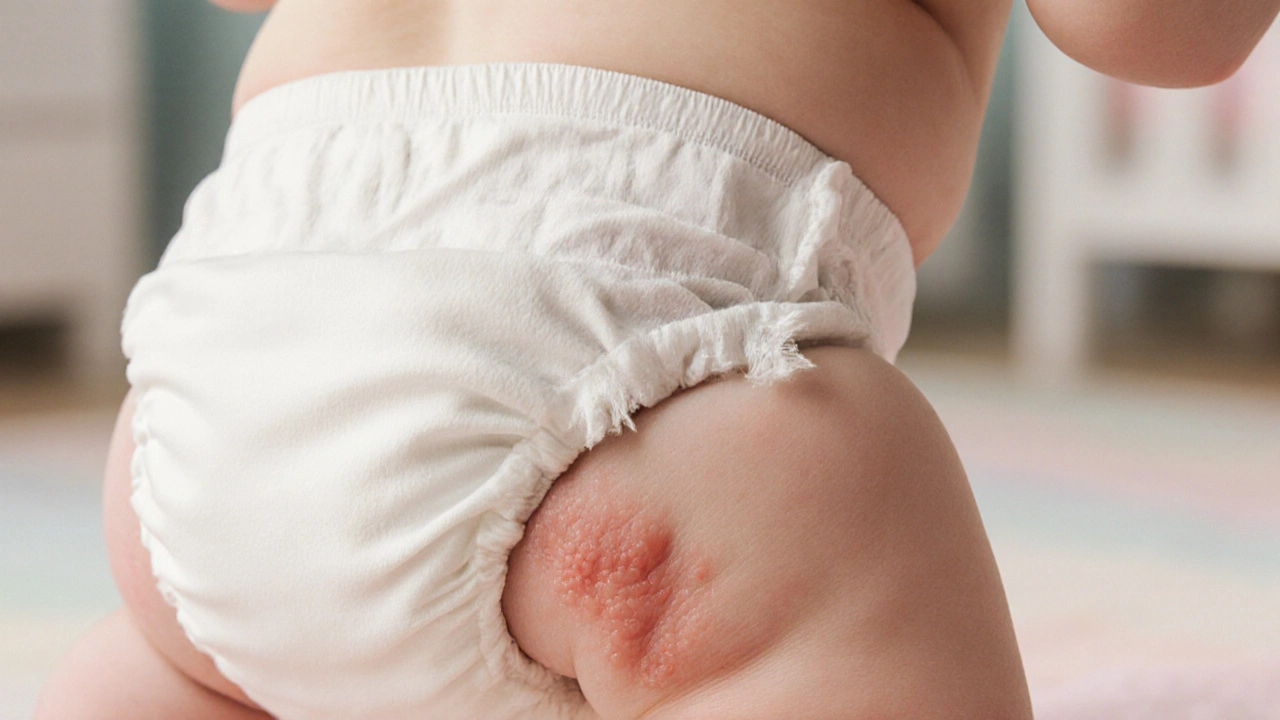
Barrier Cream Selector Tool
Choose Your Needs
Recommended Cream
Key Takeaways
- Identify friction as the main trigger and act quickly to calm irritated skin.
- Use a thin layer of a high‑quality barrier cream-zinc oxide works best for most babies.
- Keep the area clean, dry, and exposed to air for short periods each day.
- Swap to breathable, well‑fitting diapers and soft cotton clothing to prevent repeat episodes.
- Seek medical advice if the rash spreads, oozes, or shows signs of infection.
Diaper rash is a common form of skin irritation that appears in the diaper area of infants and toddlers. It shows up as redness, bumps, or even tiny blisters, and while many causes exist, friction from a tight or poorly‑ventilated diaper is one of the easiest to fix.
When a diaper rubs against delicate baby skin the thin, moisture‑rich layer covering a newborn's bottom, the constant rubbing creates tiny abrasions. Those micro‑tears let moisture, urine, and stool seep in, fueling the inflammation. In most cases, the rash is mild and disappears with a few simple steps, but ignoring it can lead to painful sores that keep the little one fussy.
Understanding Friction‑Induced Diaper Rash
Friction occurs when a diaper is too tight, has rough seams, or the baby is over‑diapered without a break. The friction itself isn’t the whole story; it’s the combination of rubbing and a moist environment that turns a small irritation into a full‑blown rash.
Key signs that friction is the culprit include:
- Redness concentrated along the waistline or where the diaper tabs sit.
- Small raised bumps that feel rough to the touch.
- Rash that appears shortly after a diaper change, especially if the diaper was snug.
If you spot these clues, you’ve probably got a classic case of friction‑induced diaper rash. The good news? It’s one of the quickest rashes to soothe.
Step‑by‑Step Relief Plan
- Gentle cleaning: Use warm water and a soft, fragrance‑free cloth or a diaper‑wipe free of alcohol and parabens. Pat the area dry-don’t rub.
- Air it out: Give your baby a diaper‑free time of 5-10 minutes a few times a day. Lay a clean towel or a breathable cloth under them.
- Apply a barrier: Choose a barrier cream with zinc oxide (see comparison table below). Spread a thin layer over the entire diaper area.
- Switch diapers: Opt for a breathable, well‑ventilated diaper. Ensure it’s snug but not tight-there should be a finger’s width of space around the waist.
- Dress smart: Use soft cotton onesies or briefs. Avoid synthetic fabrics that trap heat.
- Monitor: Check the rash after each change. If it worsens after 48‑72 hours, move to the next section.
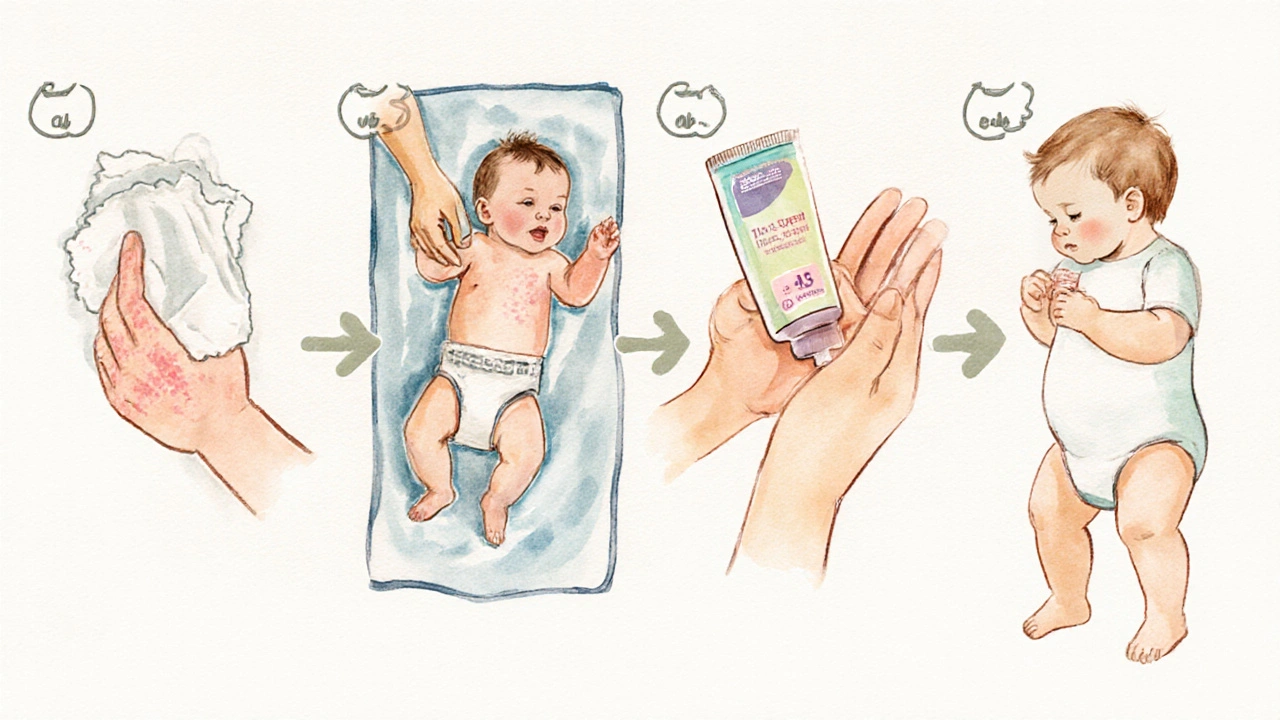
Choosing the Right Barrier Cream
Barrier creams protect skin by creating a waterproof layer that stops moisture from reaching the epidermis. Not all creams are equal, so here’s a quick side‑by‑side look at the three most popular options.
| Product | Main Ingredient | Protection Level | Typical Cost (AUD) | Pros | Cons |
|---|---|---|---|---|---|
| Zinc Oxide Ointment | Zinc oxide (15‑20%) | High - creates a thick, waterproof barrier | $5‑$10 | Excellent for severe rash, widely recommended by paediatricians | Can feel greasy, may leave white residue |
| Petroleum Jelly | Petrolatum | Medium - seals moisture but less protective than zinc oxide | $3‑$6 | Very affordable, easy to spread | Less effective against severe irritation, may attract bacteria if not changed often |
| Aloe Vera Gel | Aloe vera extract | Low - soothes but offers little waterproofing | $7‑$12 | Cooling relief, natural ingredients | Not a true barrier; best used alongside zinc oxide |
If you’re unsure which to pick, start with a zinc oxide ointment-most pediatrician a doctor who specializes in children's health recommends it for anything beyond a faint pink spot.
Home Remedies That Can Help (and When They Won’t)
Natural options are tempting, but they work best for mild irritation.
- Breast milk: Its antibodies can calm inflamed skin. Dab a few drops and let it air dry before applying a barrier.
- Chamomile tea rinse: Cool the tea, soak a soft cloth, and gently pat the rash. Chamomile’s anti‑inflammatory properties are mild, so pair it with a barrier.
- Coconut oil: Provides a light moisture barrier and has antimicrobial qualities. Use sparingly; too much can trap heat.
These tricks are fine for a faint pinkness, but if the rash is already red, raw, or weeping, stick to zinc oxide and keep the area dry. A false sense of security from home oils can prolong healing.
Preventing Future Friction Rashes
Prevention is easier than treatment. Here are habits that keep the diaper area happy:
- Right size matters: Babies grow fast. Check the diaper fit daily; the elastic should hug without digging. \n
- Change often: Every two to three hours, or sooner if you see a wetness indicator.
- Use breathable diapers: Look for ones with a cotton‑like outer layer.
- Give skin breaks: Even a short diaper‑free period reduces moisture buildup.
- Avoid harsh wipes: Alcohol or fragrance can strip the skin’s natural oils.
When you combine these steps with a good barrier, you’ll see far fewer flare‑ups.
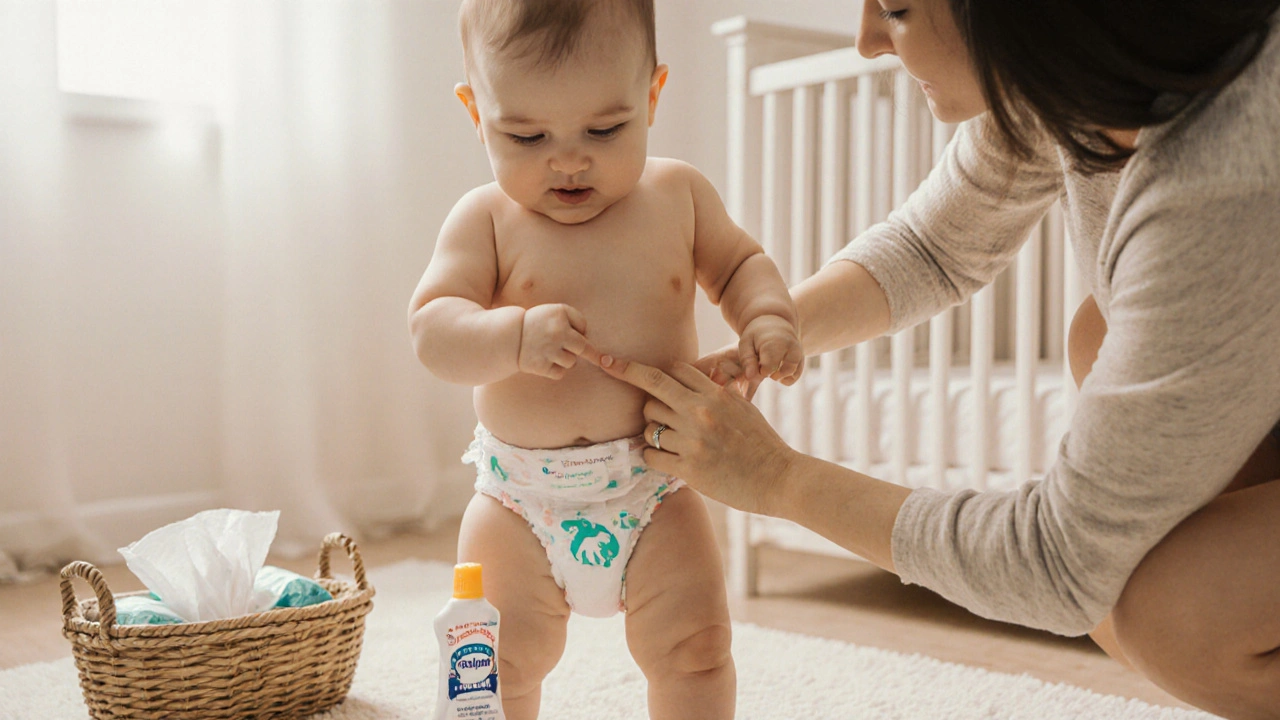
When to Call a Doctor
Most friction rashes clear up within three days. However, call a pediatrician if you notice any of the following:
- The rash spreads beyond the diaper area.
- There’s yellow or white discharge-possible yeast infection.
- The skin looks black or bruised, indicating a pressure injury.
- Fever over 38°C (100.4°F) accompanies the rash.
- Your baby seems unusually uncomfortable or refuses to eat.
Doctors may prescribe an antifungal cream for a Candida overgrowth or a mild steroid for severe inflammation. Early treatment prevents scarring and keeps baby smiling.
Quick Reference Checklist
- Clean with warm water, pat dry.
- Apply zinc oxide barrier.
- Use breathable, correctly‑fitted diapers.
- Give skin air time daily.
- Watch for signs of infection.
Frequently Asked Questions
Can I use regular baby lotion as a barrier?
Regular lotion moisturises but doesn’t block moisture. For friction rashes you need a true barrier like zinc oxide or petroleum jelly.
How long should I keep the rash uncovered?
Aim for 5-10 minutes, 2-3 times a day. Longer exposure is fine if the baby isn’t upset, but don’t leave the area exposed for hours in a cold room.
Is it normal for the rash to look milky‑white?
A milky‑white coating often signals a yeast (Candida) infection, which needs an antifungal cream-not just a barrier.
My baby’s diaper rash is persistent. Could it be an allergy?
Yes, some babies react to fragrance or chemicals in wipes or detergents. Switch to fragrance‑free, hypoallergenic products and see if the rash improves.
Should I apply more than one layer of barrier cream?
A thin, even layer works best. Too much can trap heat and actually worsen irritation.
With the right cleaning routine, a proper barrier, and a breathable diaper, most friction‑related diaper rash treatment plans resolve in just a few days. Keep an eye on the skin, and don’t hesitate to call a professional if anything looks off. Your baby’s comfort-and a happy, dry bottom-are worth the extra attention.


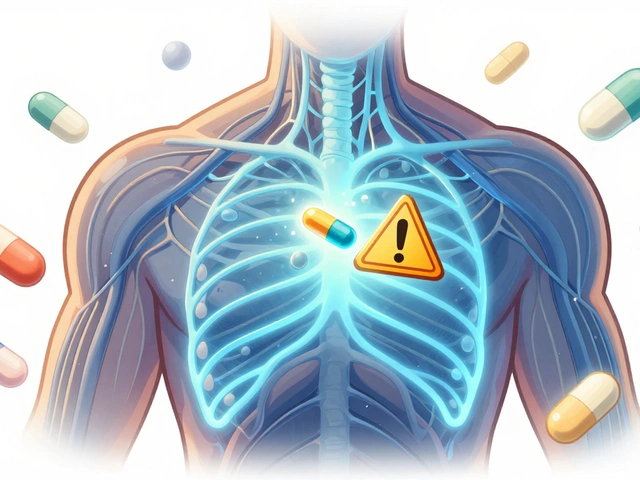


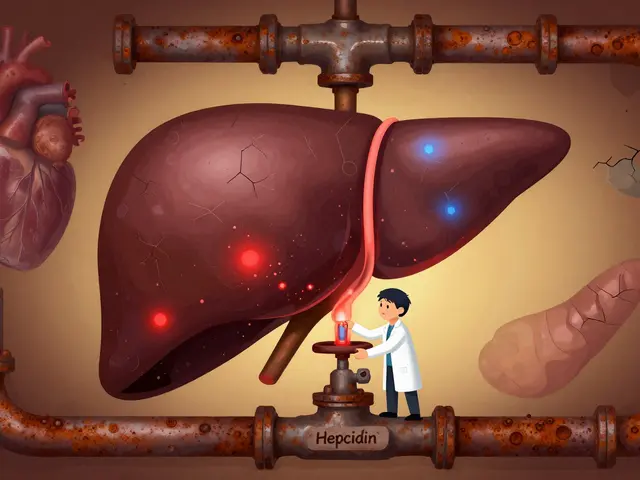
18 Comments
Start with a gentle cleanse using warm water and a soft cloth then pat the area dry before any cream is applied the friction rash will calm down faster with this simple step
After cleaning, let the baby have a few diaper‑free minutes each day – it helps the skin breathe and reduces moisture buildup, which is key to preventing the rash from coming back
Wow that rash really knows how to ruin nap time!
One must appreciate the delicate balance between a barrier’s occlusivity and its breathability; zinc oxide offers a commendable compromise, forming a steadfast shield while permitting limited aeration. It is, however, imperative to apply it as a thin veil rather than a plaster‑like slab, lest one trap heat and encourage bacterial proliferation. Moreover, the ointment’s whitish hue serves as a visual cue that the area is adequately covered. Should the rash persist beyond 72 hours, consider the possibility of a secondary infection, perhaps Candida, which mandates antifungal intervention. The literature consistently underscores the necessity of a pediatric evaluation in such scenarios, especially when systemic symptoms like fever emerge. In essence, the regimen is straightforward: cleanse, dry, barrier, and monitor diligently.
Key steps you can follow:
- Warm water rinse, no soaps
- Pat dry, no rubbing
- Thin zinc‑oxide layer
- Loose but snug diaper
- Check every 2‑3 hrs
Sure, because nothing says "I care" like slapping on a thick layer of zinc oxide and pretending the baby won’t notice the sticky mess 😂🍼
Applying too much cream is a moral failing; it only fuels the fire of irritation.
Honestly, British parents have always known the value of a proper fit – a diaper that squeezes more than it cushions is a rite of passage for a rash.
Let’s all agree that a consistent routine-clean, dry, barrier-works better than any fancy product hype.
Keeping the diaper area exposed for short intervals each day can dramatically lower moisture levels and speed up healing.
Cost‑effective options like petroleum jelly are fine for mild cases.
The subtle shift from pink to raw red usually signals that the barrier isn’t doing its job fast enough.
Stay positive! A few days of consistent care and your little one will be back to smiling and moving freely.
Remember, you’re the coach here: model calm, apply the cream gently, and celebrate each small improvement.
In the quiet theater of infancy, the skin whispers its distress; attend to that soft murmur with a tender veil of zinc, and the drama of irritation will dissolve into a lullaby of comfort.
First, recognize that friction‑induced diaper rash is fundamentally a failure of moisture management, a condition wherein the epidermis, overwhelmed by urine and fecal enzymes, succumbs to maceration; second, understand that the primary therapeutic objective is to restore a dry, protected environment, thereby halting the cascade of inflammation, second, the application of a zinc‑oxide based barrier, applied in a thin, uniform layer, constitutes the gold standard, third, the barrier must be reapplied after each diaper change to maintain its integrity, fourth, caregivers should ensure that the diaper fits snugly without constriction, allowing a finger’s width of space at the waist, fifth, the inclusion of diaper‑free intervals, lasting five to ten minutes, fosters aeration and evaporation of residual moisture, sixth, the selection of breathable, hypoallergenic diapers mitigates further friction, seventh, while petroleum jelly offers a cost‑effective alternative, it lacks the occlusive strength of zinc oxide, eighth, for infants with sensitive skin, an aloe‑vera gel may provide soothing, but it should be coupled with a true barrier, ninth, natural remedies such as breast‑milk drops can complement but never replace the barrier function, tenth, monitoring for signs of infection-spreading erythema, purulent discharge, or fever-necessitates prompt medical consultation, eleventh, should a Candida overgrowth be suspected, an antifungal cream becomes essential, twelfth, any steroid application must be brief and under pediatric guidance, thirteenth, documentation of rash progression, including photographs, assists healthcare providers, fourteenth, educating all caregivers about proper diapering techniques ensures consistency, fifteenth, ultimately, the synergy of cleanliness, dryness, and barrier protection resolves the majority of friction‑related diaper rashes.
While many attribute diaper discomfort solely to hygiene, the nuanced interplay of material composition, mechanical stress, and microbial flora warrants a more scholarly examination.
Stick to the basics, keep it simple, and you’ll see that rash fading faster than you think 😊